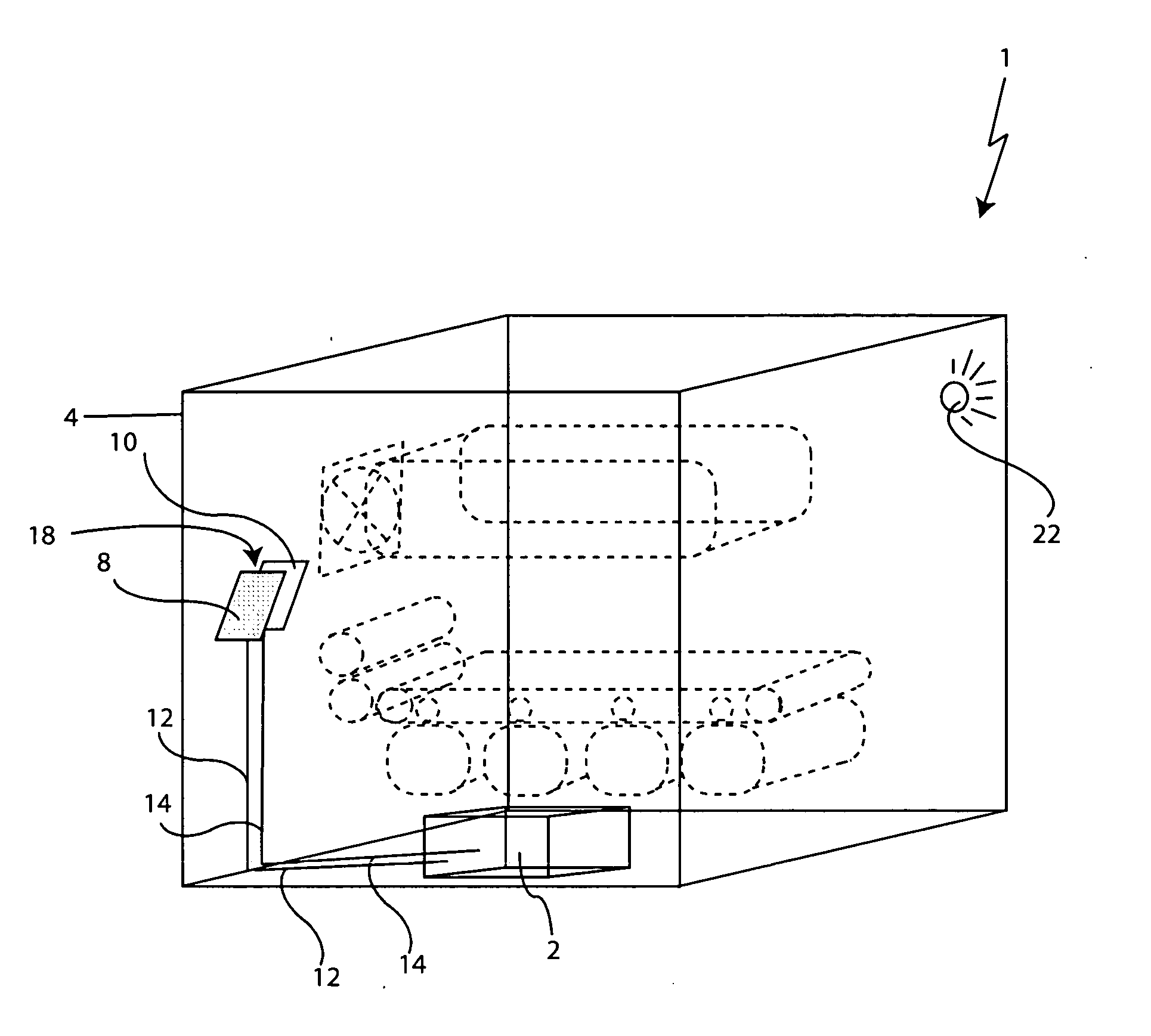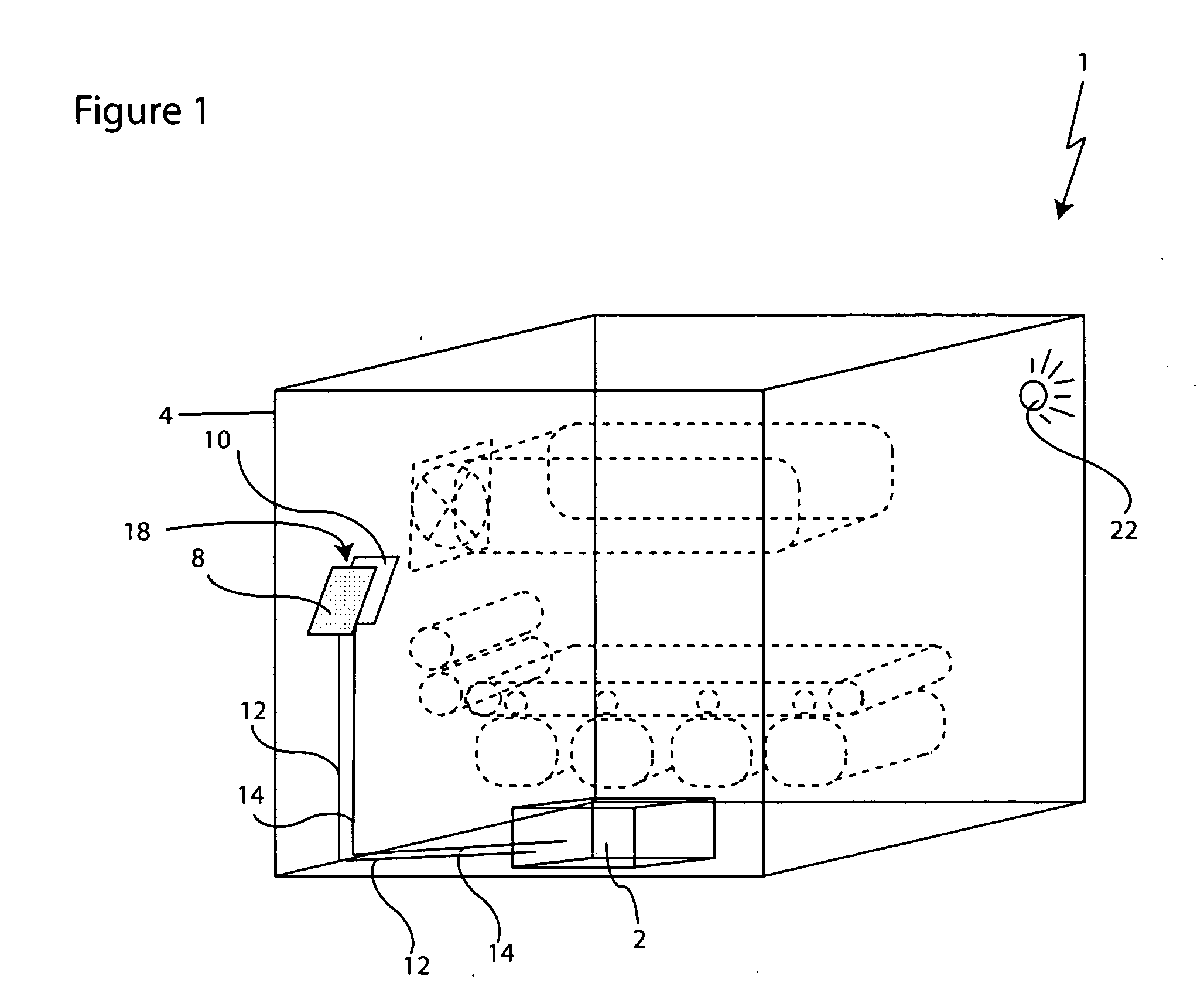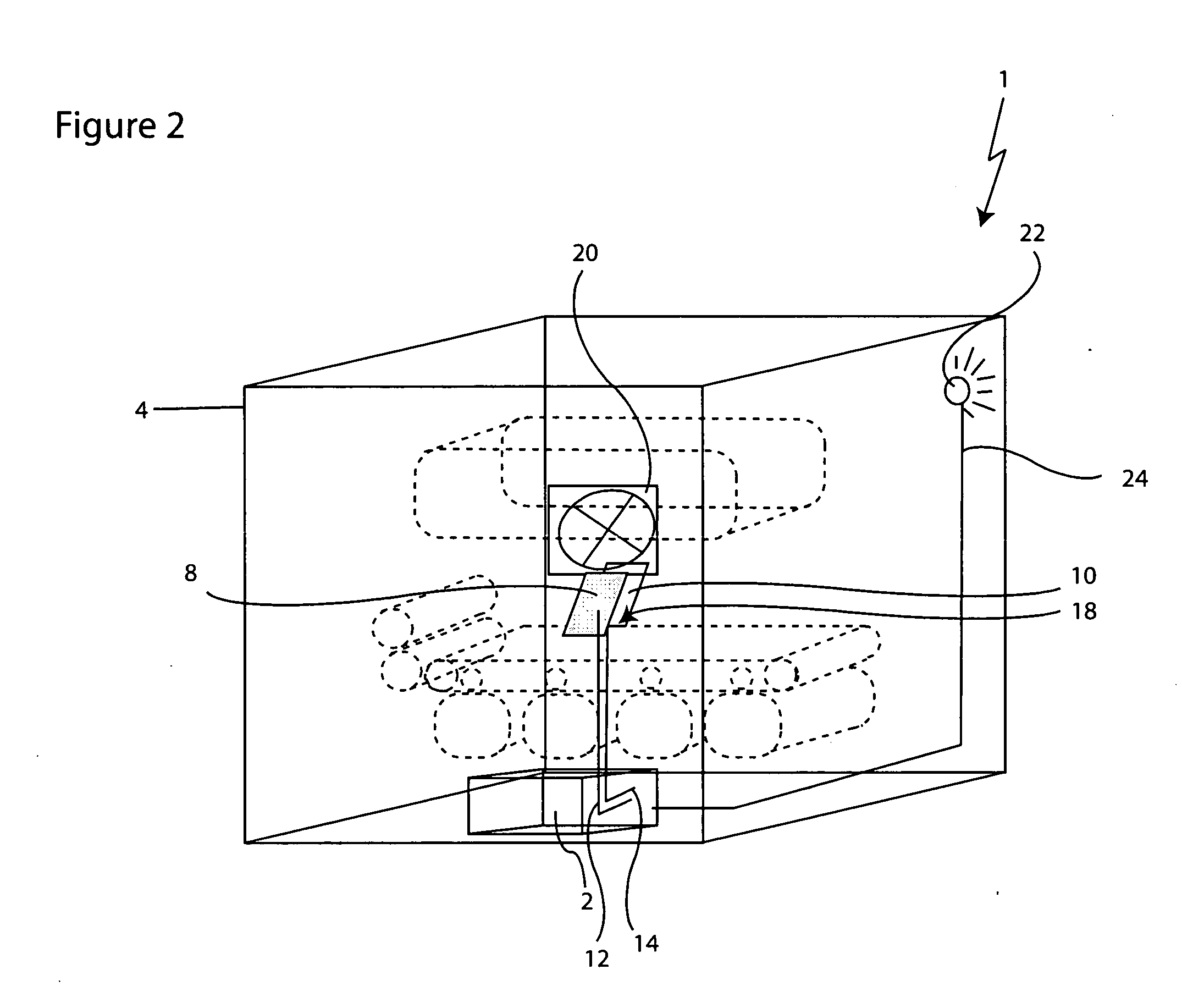Volatile organic compound detector
a technology of volatile organic compounds and detectors, applied in electrographic processes, instruments, cooking vessels, etc., can solve the problems of inability to detect volatile compounds, and inability to detect human smells at the same time, so as to reduce potential accidents in printers
- Summary
- Abstract
- Description
- Claims
- Application Information
AI Technical Summary
Benefits of technology
Problems solved by technology
Method used
Image
Examples
Embodiment Construction
[0018] Electrophotographic printing systems are well known in the commercial and industrial markets. In their simplest terms, they are units that produce a differential electrostatic charge image (in the electrophotographic field, this can be referred to as a latent image or latent charge image) on a substrate (e.g., photoreceptive drum, belt, sheets); the substrate with an electrostatic charge image thereon is subsequently exposed to an environment with an ink (e.g., liquid ink, toner, or developer in droplet form; or, in dry electrophotography, a powder), which is differentially attracted to areas of the substrate with differential charging thereon. The ink forms an intermediate (not yet permanent) image on the latent electrophotographic charge image, then the intermediate image is subsequently transferred to a final substrate (e.g. paper, transparency film, etc.) and affixed by heating, irradiation, drying, fusing or any other stabilizing mechanism. Alternatively, an intermediate...
PUM
 Login to View More
Login to View More Abstract
Description
Claims
Application Information
 Login to View More
Login to View More - R&D
- Intellectual Property
- Life Sciences
- Materials
- Tech Scout
- Unparalleled Data Quality
- Higher Quality Content
- 60% Fewer Hallucinations
Browse by: Latest US Patents, China's latest patents, Technical Efficacy Thesaurus, Application Domain, Technology Topic, Popular Technical Reports.
© 2025 PatSnap. All rights reserved.Legal|Privacy policy|Modern Slavery Act Transparency Statement|Sitemap|About US| Contact US: help@patsnap.com



